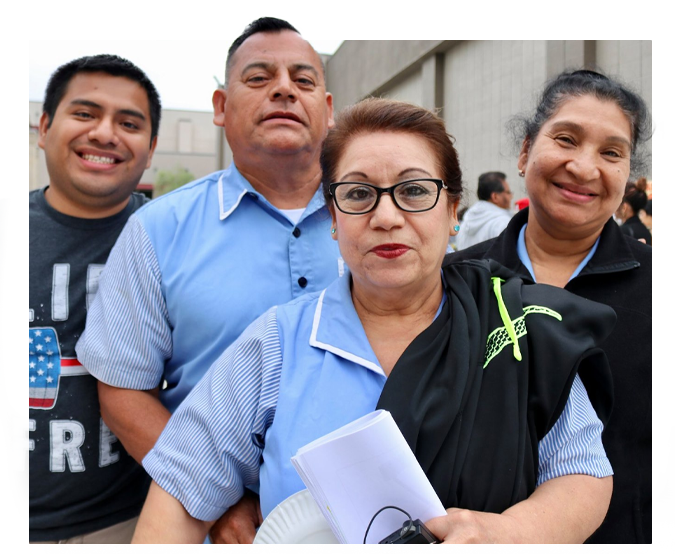The Higher Wages Lower Rent Alliance supports policies that take the lead on the issues working people most care about:
Higher Wages & Lower Rent.
The Higher Wages, Lower Rent Alliance is run by veterans of swing-state political campaigns, grassroots community work, and labor organizing. It seeks to increase the participation of working people in our political process through policy work on issues that make politics meaningful to their daily lives.
Our Theory and Our Plan:
In most "purple" swing districts in the United States, elections are decided by the votes of working people.
Renters and low-wage workers like restaurant cooks, janitors, retail attendants, and warehouse drivers. The “swing” in these districts, the likelihood that the district changes hands between Republicans or Democrats in any given electoral cycle, is usually shaped by how this often-overlooked group votes or doesn’t vote in an election.
We believe that some candidates over-perform in swing districts because their policies, messaging, and campaign strategies connect with working families.
We think Democrats who do this over several election cycles will win districts that Democrats have previously lost.
Our PAC is an effort to support candidates that lead on the issues working people most care about: Higher Wages and Lower Rent.
What We Do:

The Higher Wages Lower Rent Alliance seeks to increase the participation of working people in our political process.
We support grassroots politics in districts where working people live, and support policy campaigns to get working people involved in local issues that have immediate impacts on their lives. We do this with the hope of improving their connection to and participation in all levels of the political process over time.
Case Study


Southern California is a great example where Higher Wages Lower Rent PAC seeks to act on these strategic opportunities. While California is known as a reliably Democratic “Blue” state, in reality, many parts of the state are swing district “purple” or “deep red” Republican. There are enough swing Congressional districts in California currently held by Republicans to flip the US House of Representatives if those Democratic candidates won those districts. Four critical swing congressional districts are in Southern California alone. And there are similar “swing districts” in state legislative, city council, and school board elections overlapping in each of these competitive regions. Will progressive forces be able to build the infrastructure to flip these districts over successive election cycles?
Fortunately, California is a state where field canvassing is especially powerful. Mail ballots are sent to every voter a month before election day, making it easier to mobilize low-propensity voters than in other swing districts. According to CalMatters, there are “currently 4.7 million eligible but unregistered voters in the state – most of whom are Black, Latino, or Asian American and Pacific Islander – the largest unregistered state electorate in the country.”
And while that fact presents a daunting challenge, it is also one of our greatest opportunities because in California citizens can be registered at polling places that open 10 days before the election and vote provisionally on the spot. Therefore, funds invested in canvassing in California can be more effectively used to turn out unlikely voters than in nearly any other state. California recently consolidated its federal, state and local races onto a single ballot on even years, so these legislative efforts mobilize voters in elections for every level of government.
